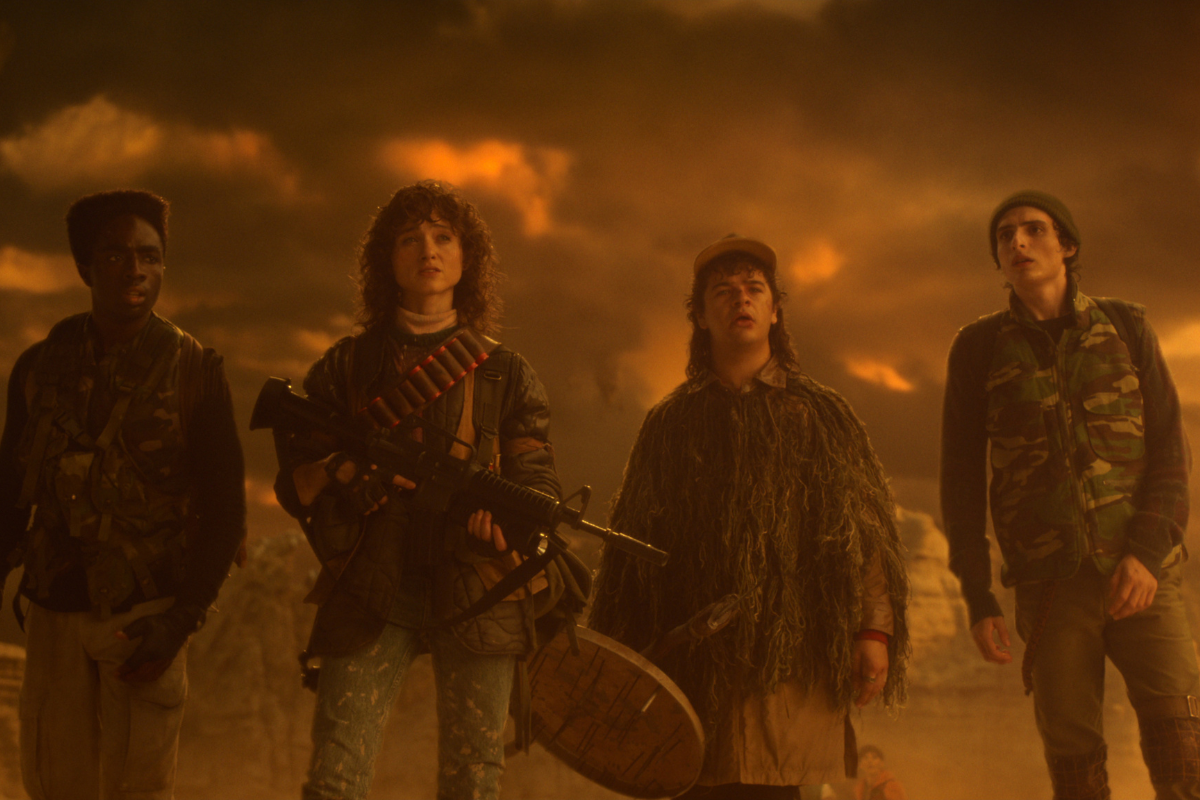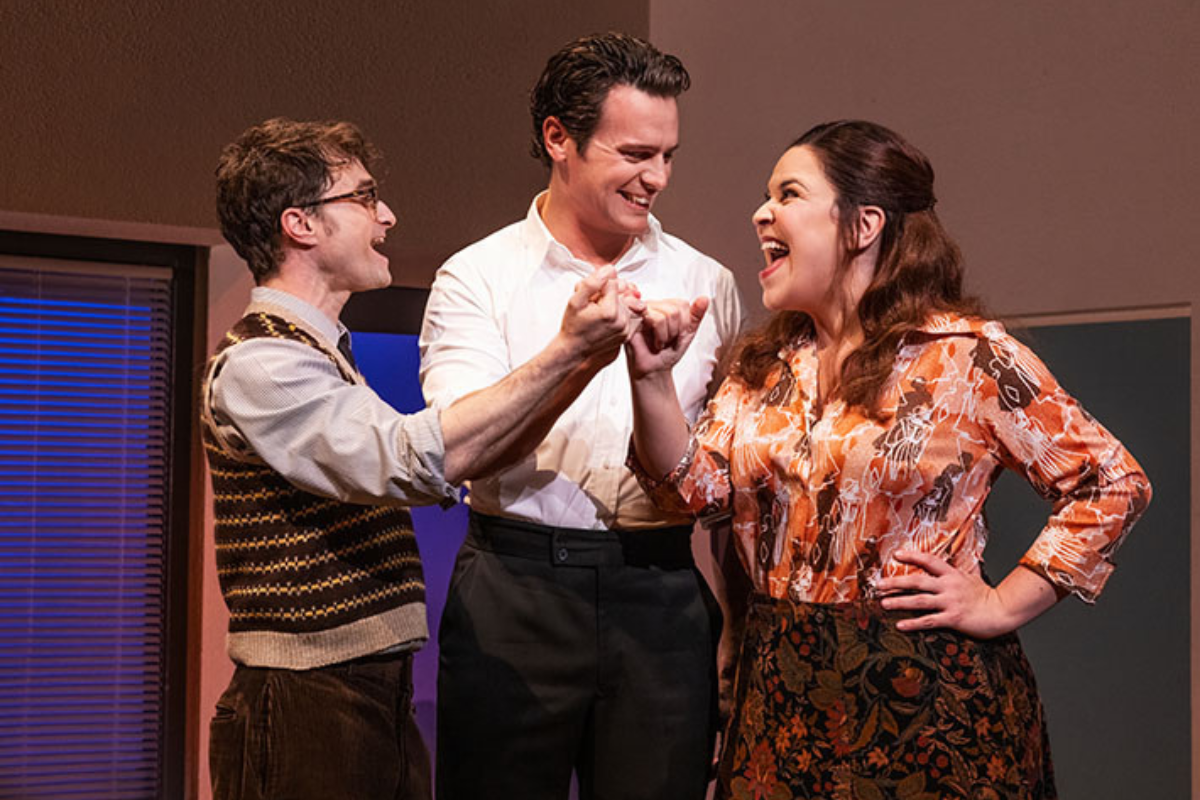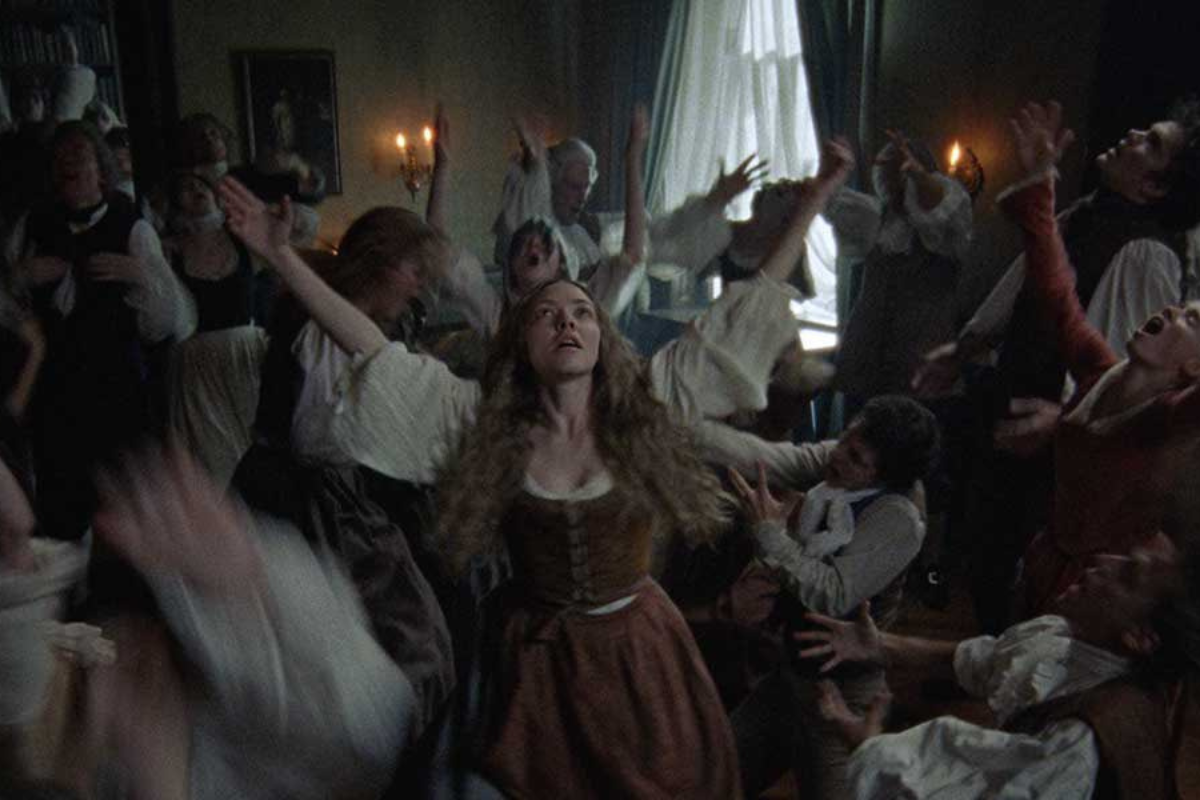UNDERSTANDING SCREENWRITING: Variety is the Spice of Life
Script contributor Tom Stempel deals with two disappointments ‘Being the Ricardos’ and ‘The Gilded Age,’ two OK pieces ‘The Tender Bar’ and ‘Around the World in 80 Days’ and one brilliant miniature ‘On the Rocks’.
A Major Disappointment.
Being the Ricardos (2021. Written by Aaron Sorkin. 131 minutes)
You would expect a film written by Aaron Sorkin and starring Nicole Kidman, Javier Bardem, and J.K. Simmons to be great. Unfortunately, this one is not, and the writing is only part of the problem.
Sorkin is writing about Lucille Ball and Desi Arnaz and focuses on one week when they were making an episode of the early fifties television megahit I Love Lucy. The major problem with the script is that Sorkin tries to stuff a lot of things that happened at different times into one week: gossip that Lucy was a member of the Communist Party (she was and she wasn’t), other gossip that Desi was having affairs with other women (he was), Lucy was pregnant and she and Desi were trying to convince CBS and their sponsor Philip Morris to let them write that into the show (they succeeded). Well, that will keep a writer busy.
But Sorkin also adds flashbacks of Lucy and Desi meeting, Lucy getting released from her home studio RKO, and Lucy doing a radio show. So what we have is a script overloaded with plots, subplots, and more subplots. We are constantly losing focus of each, or all, of the plots.
I also have some quibbles about the historical details. When the head of RKO fires her in 1942, he says that Judy Holiday is a bigger star. Holiday had only done a couple of uncredited bits in movies and did not become a star until the late forties. That’s a dumb mistake.
I am also not entirely convinced of the portrait of the writing process of I Love Lucy. I interviewed Madelyn Davis for my 1992 book Storytellers to the Nation: A History of American Television Writing, and her version of writing for the show was that it was not as tense as the film makes it out to be. The film portrays her writing partner Bob Carroll as almost the village idiot, which I gather he was not. Yes, the team did have problems with the showrunner Jess Oppenheimer, but Davis gave me the impression that they were fairly easily worked out. In addition to having the writers portrayed as their fifties’ selves, they are also portrayed by other actors as their older selves. The older Davis is played by Linda Lavin, who played the lead in Alice, a later sitcom that Davis was a producer on for eight years. Lavin portrays the older Davis as a lot edgier than she struck me. But Lavin undoubtedly spent more time with her on their show, so she may be more accurate.
The screenplay is not the biggest problem with the film. Nicole Kidman is dreadfully miscast as Lucille Ball. I am not sure if another actress could play Ball as Sorkin has written her, but Kidman never truly captures either Ball the person or Ball as Lucy Ricardo. She does not have the right look (the makeup is awful) or the right presence.
On the brighter side, Javier Bardem is Desi Arnaz, Babaloo and all.
Another Major Disappointment.
The Gilded Age (2022. Written by Julian Fellowes. One-hour episodes)
You would expect a series written by Julian Fellowes and starring Christine Baranski, Cynthia Nixon, and Carrie Coon to be great. This one isn’t either, and the writing is the major problem. I gave up on it after nine episodes.
Here Julian Fellowes, the creator of Downton Abbey, is taking on the American upper crust of New York City in the 1880s. He is following two families: The Van Rhijns, who are old money, and the Russells, who are new money. The Van Rhijns are headed by Agnes, who looks down her nose on everybody. The Russells are led by Bertha, the wife of railroad tycoon George. The Russells have just built a big, gaudy mansion across the street from the Van Rhijn big, gaudy mansion. Bertha really, really wants to get into high society. Hijinks ensue.
The basic problem with the script is that the dialogue, usually a strong suite of Fellowes, is flatter than a day-old pancake. They have gathered a great set of actors (in addition to the above-mentioned, there is also Nathan Lane, Jeanne Tripplehorn, and Audra McDonald), but the dialogue has no texture. The characters declare themselves in the most on-the-nose way, which means the actors have no acting to do. I think it counts as felony scriptwriting to not provide actors that good great material. During the weeks I was watching the series, I happened to see on Facebook a clip of the great scene from Downton Abbey where Lady Mary asks Matthew to get down on his knees in the snow to propose to her. Every line there gives the actors something to play.
I suspect the problem with Gilded Age may have come from it being overly researched, often a problem in historical works. In Downton Fellowes was dealing with a lot of what he knew. Here he is depending on research about New York City at the time. There was a long piece in the Los Angeles Times about all the research that went into the storyline about a young Black writer who goes to work for Agnes Van Rhijn. Peggy Scott is from a well-to-do Black family in Brooklyn. We get to see some of her family life there, but the dialogue here is just as flat as that for the white folks.
When you are writing a script that requires a lot of research, you have to at some point shift from research to creating the story and characters for your script. If we don’t get into your story and your characters, all the research in the world will not help you.
And Now Simply a Flawed but Nice Little Movie.
The Tender Bar (2021. Screenplay by William Monahan, based on the memoir by J. R. Moehringer. 106 minutes)
The recurring problem with writing a movie based on a memoir is that it is based on a memoir. The screenwriter is torn between being completely faithful to the book and/or shaping it into a more dramatic and compelling film.
The story here is about JR, a young boy whose father has bailed out on him, only to show up from time to time. JR and his mom have to move back into his grandfather’s house on Long Island, where other members of the family show up to stay from time to time. The family scenes are rich and funny.
The most vivid of the family members, at least from JR’s point of view, is his Uncle Charlie, a bartender who passes out a lot of advice to JR on how to be Charlie’s idea of a man. Charlie is played by Ben Affleck in one of his best performances.
JR grows up and goes to Yale (although none of the shots, either exterior or interior, are convincing as Yale), and since it is JR’s memoir we do not see enough of Charlie during his college years. That’s a problem when you have a role and a star in it who takes the focus away from the lead.
The ending is a confrontation between the adult JR and his father. I have no reason to believe it did not happen in the way it happens in the film. But that is not the most interesting way that situation and scene could have played out, a classic example of the problem of scripting a memoir.
There is No Balloon in Jules Verne.
Around the World in 80 Days (2022. Series created by Ashley Pharoah and Caleb Ranson, based on the novel by Jules Verne. 480 minutes.) Around the World in 80 Days (1956. Screenplay by James Poe, John Farrow, and S.J. Perelman, based on the novel by Jules Verne. 175 minutes)
OK, in Verne’s novel there is at least the mention of a hot air balloon as one possible way to travel, but it is dismissed immediately.
So why do we always think of there being a balloon in the story? Because the writers of the 1956 version put one in, and it is the one scene that knocked audiences out then and everybody remembers since. It is not just, as one person writing on the internet said, that a picture is worth a thousand words. It is that the film was shot in a new widescreen process known as Todd-AO. The visual images of the balloon floating across France and the aerial shots of the ground below were spectacular. The images were also beautifully cut together.
The person writing on the internet, a true Jules Verne fan, dismissed the impact of the film and the scene, calling it a “B-picture.” It was hardly that. Its estimated budget was $6 million, and its domestic gross was $42 million. It won the Academy Award for Best Adapted Screenplay and Best Picture. And like several Best Picture winners, it is hardly watchable today. It is long and slow, but not without its moments. (Yes, I did watch it again before writing this column; the things I do for my readers.)
The newest version is an eight-hour miniseries produced by a variety of companies, including the BBC and Public Broadcasting in America. In the ’56 version, the three credited writers stuffed as much as they could into the film and still kept it under three hours (although the latest release goes a minute over by including the intermission music). The writers of the new version have broken it down into eight one-hour episodes, and each episode is self-contained. It makes the journey go in easier stages.
The ’56 adaptation is closer to the novel than the newer one, but one advantage the earlier version has is that the last of the three writers was the noted humorist S.J. Perelman. He brings a light touch to the material, particularly his writing of Phileas Fogg, played with both high-toned snobbery and charm by David Niven. The writers of that version also changed Fogg’s valet Passepartout from a Frenchman to a Mexican so he could be played by the great Latin American star Cantinflas.
The new version has David Tennant as Fogg and in both the writing and his performance is rather grim and one-note. Passepartout is back to being French, but he is now Black, which produces interesting reactions to him on the journey. The writers have dropped Aouda, the Indian princess they rescued and replaced her with a woman journalist Abigail “Fix” Fortescue who goes with them on the trip from the start. Both Ibrahim Koma and Leonie Benesch are much livelier in their respective roles than Tennant. The writers resist pairing Abigail up with Fogg, for reasons revealed later in the series, and they pair her with Passepartout, which produces more interesting reactions.
In Verne and the ’56 film, the journey across the United States is by train, with interruptions by attacking Indians. The new version is a little more politically correct. They are going part of the way by stagecoach and at one point the stage is stopped by a Black man dressed in black, who turns out to be a Marshal bringing a prisoner to justice. Fogg and company seem to have wandered into a Quentin Tarantino movie, although with nicer language.
Fogg and the others get back to London in time for him to win his bet that he can go around the world in 80 days. The three of them lock themselves in the main room of the Reform club. They read a newspaper story about a sea monster that may be a squid or even something mechanical.
There is going to be a second season, although they may have to change the title if they are going to have Fogg and his team deal with Jules Verne’s Captain Nemo and the Nautilus.
A Brilliant Miniature.
On the Rocks (2020. Written by Sofia Coppola. 96 minutes)
This small film got lost in the first-year COVID shuffle in 2020. At least in Los Angeles, where it did not get big award nominations. It made more of an impact in other cities around the country, as you can see in the awards page on IMDb here. Maybe us big city folk are not as smart as we think we are.
The film begins with the wedding of Laura and Dean and jumps ahead quickly to several years later (look how Coppola, who also directed, does that). Laura is taking care of their two kids and is having writer’s block. She begins to suspect that Dean, who is heading a new start-up, is having an affair with his beautiful colleague Fiona.
Laura is played by Rashida Jones in her best performance, full of detail both written and acted. Coppola gives us 18 minutes with her before she brings in the heavy artillery. That is her dad, Felix, who is a character and a half, which explains why Coppola lets us spend enough time with Laura to become very involved with her.
Felix is an art dealer always on the make for a work of art to buy. He is very much a man about town who seems to know everybody in New York City. Certainly, every headwaiter. That running gag pays off brilliantly after a car chase, and I will let you find out how. He also sings, but since he is played by Bill Murray, he sings like Bill Murray. You may have your own opinion about that.
Laura tells dad her concerns about Dean, and he becomes convinced that Dean is definitely having an affair. He offers to get a private detective he knows (hey, I told you Felix knows everybody) to follow, but Laura turns him down. So Felix takes Laura on a stakeout, which turns into the car chase.
The scenes between Laura and Felix are so beautifully written, with such an understanding of their relationship, and that in several places Coppola just photographs the actors, with no fancy camera movements. With these two actors at the height of their powers, that is all you need to do.
In spite of not finding any hard evidence, Felix drags Laura off to Mexico where Dean and Fiona have gone on a business trip. Felix and Laura sneak up on their hotel room. But Dean is not there. He’s gone back to New York. But he’s let Fiona have his suite, and she is sharing it with her friend. We jump to a conclusion about the friend, but look at the one detail Coppola gives us that tells us we are wrong.
The three final scenes, back in New York, are different in just the right ways. In the first Dean and Laura talk and get things straight between them. It is very on-the-nose dialogue, which I have been telling you for years to avoid. Here it is necessary to make clear where they stand. Next is a scene with Laura and Felix, and in keeping with the rest of the film, it is rich and nuanced. And the final scene is of Dean and Laura at dinner. Yes, there is some dialogue, but the crucial element in the scene is a prop. It is a very simple prop, but we know what it means. Boy, is that good screenwriting.
Learn more about the craft and business of screenwriting from our Script University courses!
Tom Stempel is a Professor Emeritus at Los Angeles City College, where he taught film history and screenwriting from 1971 to 2011. He has written six books on film, five of them about screen and television writing. You can learn more about his books here. His 2008 book Understanding Screenwriting: Learning from Good, Not-Quite-So- Good, and Bad Screenplays evolved into this column. The column first appeared in 2008 at the blog The House Next Door, then at Slant, and then Creative Screenwriting before it found its forever home at Script.
In the column he reviews movies and television from the standpoint of screenwriting. He looks at new movies, old movies, and television movies and shows, as well as writing occasional other items, such as appreciations of screenwriters who have passed away, plays based on films, books on screenwriting and screenwriters, and other sundries.
In September 2023 Tom Stempel was awarded the inaugural Lifetime Achievement in the Service of Screenwriting Research by the international organization the Screenwriting Research Network.







